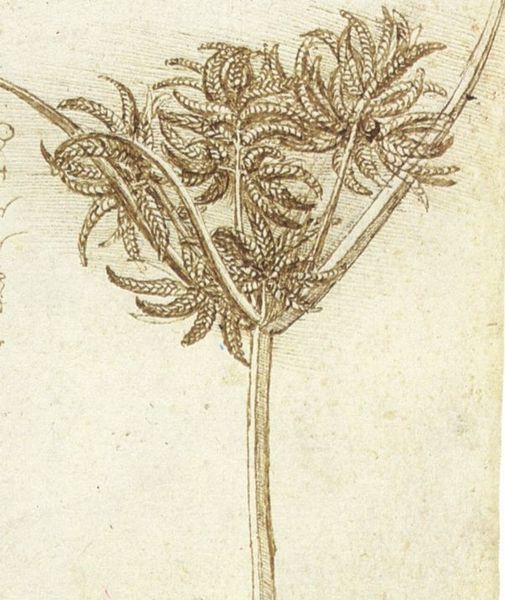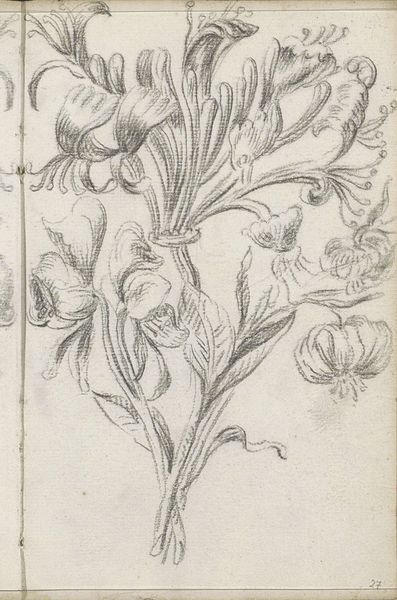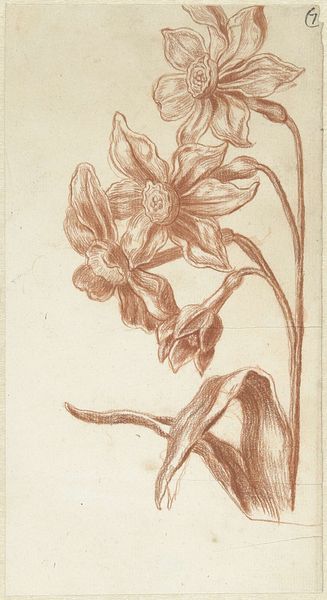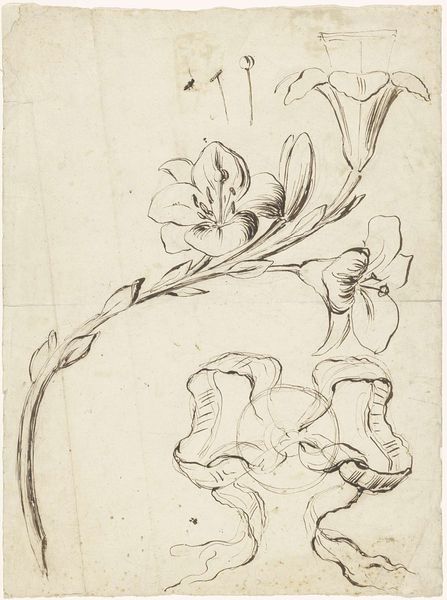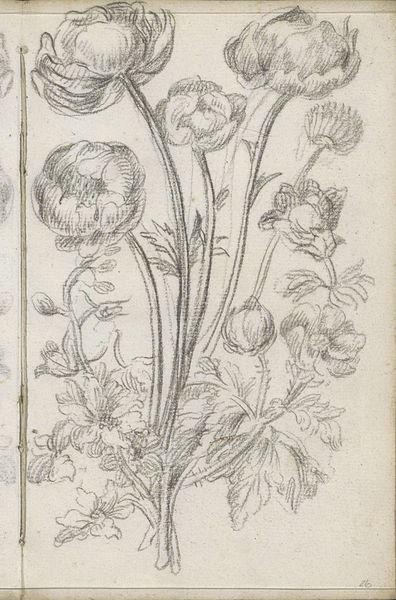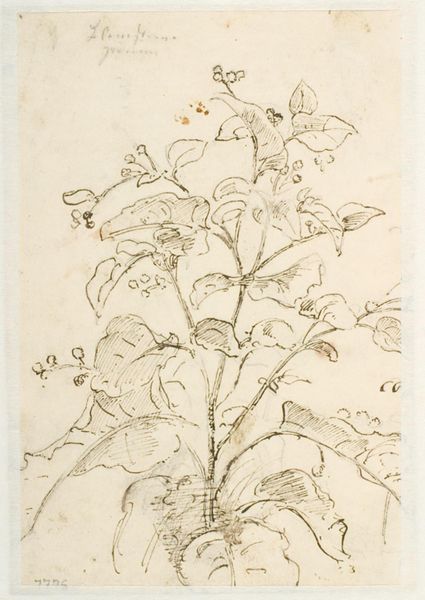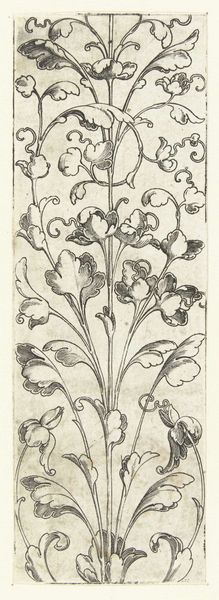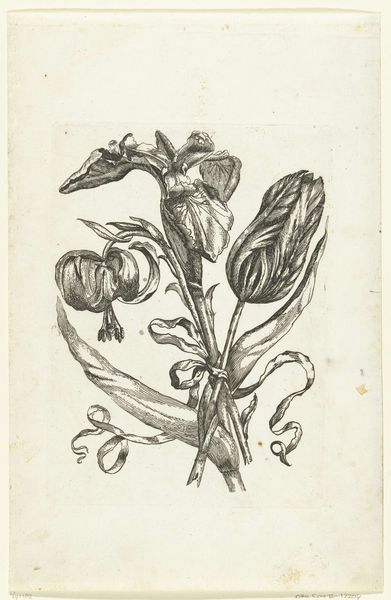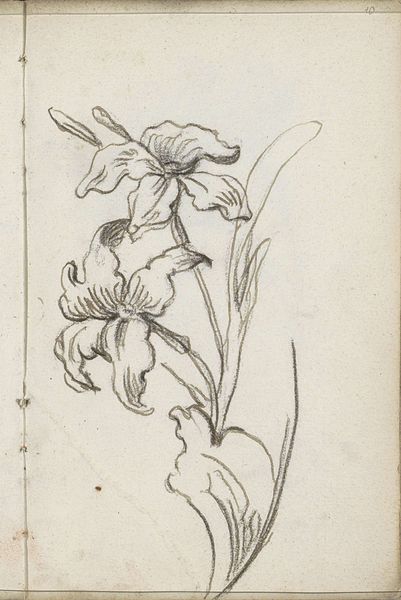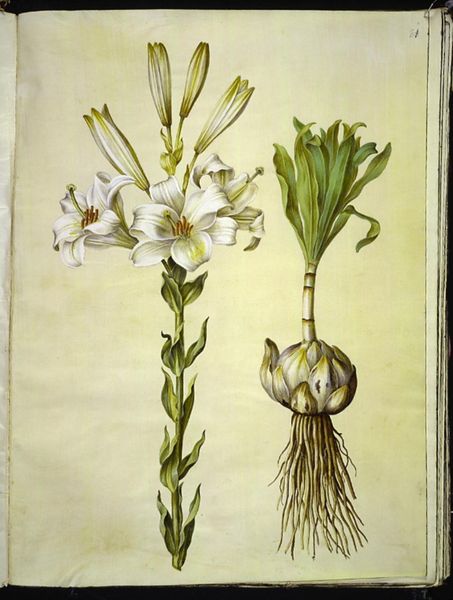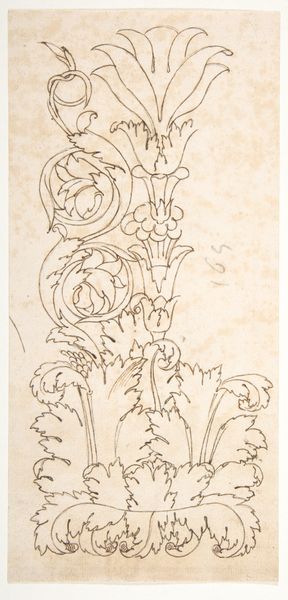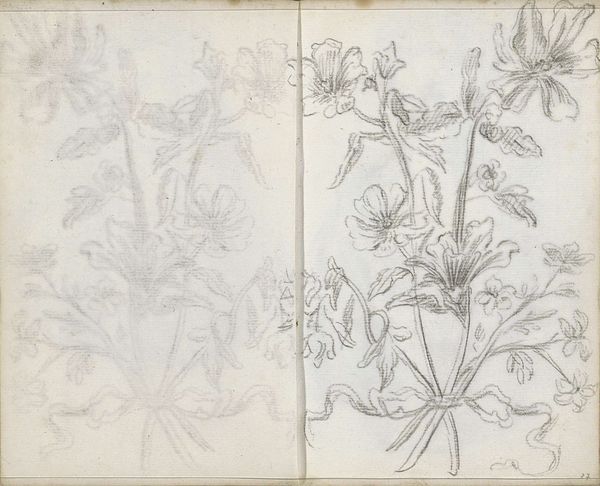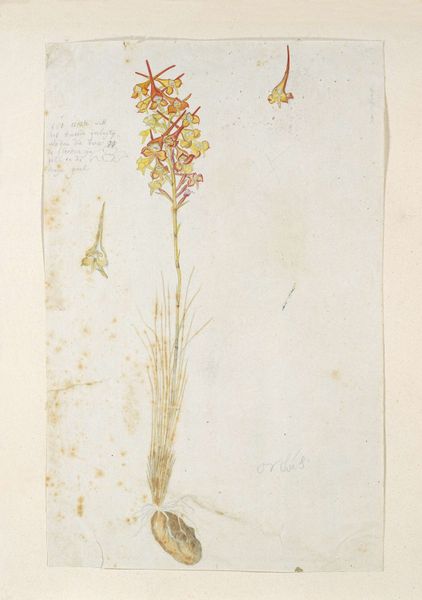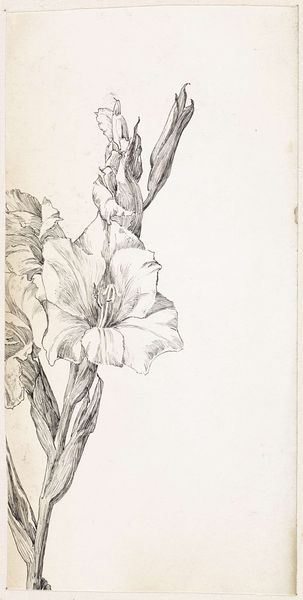
drawing, pencil
#
drawing
#
light pencil work
#
grass
#
pencil sketch
#
landscape
#
flower
#
11_renaissance
#
plant
#
pencil
#
line
#
pencil work
#
botany
#
academic-art
#
italian-renaissance
Dimensions: 31.4 x 17.7 cm
Copyright: Public domain
Curator: It’s a striking image, isn’t it? The pencil sketch, known as "Lily", dates back to around 1475 and is attributed to Leonardo da Vinci. Editor: Yes, my first impression is one of delicate strength. The way the lines capture the fragility of the petals but also the solid structure of the stem… It’s quite beautiful. There is an interesting relationship between the natural subject matter and the time of this artwork. Curator: Indeed. You know, flowers during the Renaissance carried extensive symbolic weight, particularly lilies. Often associated with the Virgin Mary and representing purity, innocence, and resurrection, Leonardo situates this piece, perhaps unconsciously, into centuries of art history. What readings could one draw in terms of gender and the Virgin Mary? Editor: That's interesting. How might societal views around the natural sciences be communicated by something like this? If Leonardo used the image of the Lily as an exploration of the relationship between Mary and other images of women in a largely patriarchal and Catholic society, his motivations can tell us more about what those images mean. As an artist deeply engaged with science and anatomy, there's a fascinating dialogue happening here between the idealized religious figure and naturalism. Curator: And consider the implications of drawing in this era. Sketches like this were fundamental to the Renaissance artistic process. Not just preparatory but also explorations of the natural world, attempting to understand its inner workings and structures, the pencil-work reflecting light to emphasize a sort of understanding only someone sketching something from real-life could possibly appreciate. Editor: Absolutely. It's that interplay between the objective, scientific gaze and the artist's subjective interpretation that I find compelling. The institutional support offered at the time also must be acknowledged to create a well-rounded sense of da Vinci's influences when he drew this lily. Curator: Exactly! Understanding the network of patrons, fellow artists, and cultural expectations helps us interpret the role this type of drawing played and its potential impact. I have gained some insights myself about the interaction of this sketch and the artistic traditions. Editor: Well, considering these questions definitely highlights the ongoing relevance of this centuries-old drawing for broader conversations concerning art history and gender and historical sociopolitical contexts. I am glad to walk away with new lines of questioning about DaVinci himself!
Comments
No comments
Be the first to comment and join the conversation on the ultimate creative platform.
